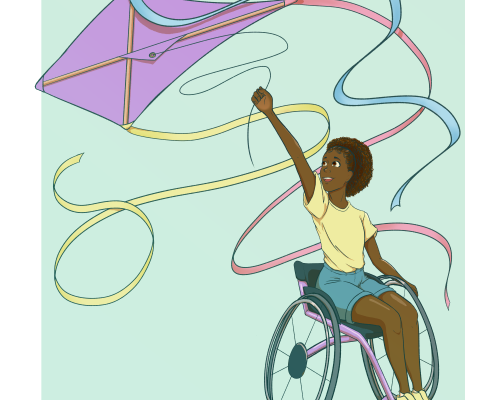Staying Active (Mental Health Series Part Seven)

Welcome back to this series on mental health. I am happy you have joined me. As I mentioned in the first part of this series, I want to talk to you about how important it is to stay active.
Life can get so busy that we forget to stay active or put staying active at the bottom of our priority list. Additionally, for many of us with SCIs, we think we cannot work out anymore, or that there is no way for us to do it independently. However, these perceptions are highly incorrect. No matter the level of injury, you can stay active in your own way.
As a C5/6 quadriplegic, there are some workouts I do independently and others that I need assistance with, and that is completely fine! Some of my favourite ways to stay active include:
- Going for a stroll outside or at a facility with a track
- Lifting weights using assistive handcuffs by Active Hands to grip
- Using my favourite aerobic workout video. I found it on YouTube on this page
- Physiotherapy sessions
- Stretching what I can with my arms in bed
- Using my lung strengthening device
Research has found that physical activity and staying active have countless benefits for your physical and psychological well-being. In terms of mental health, research suggests that staying active can:
- Improve self-esteem
- Improve cognition and focus
- Distract you from the stress of life
- Provide you with a sense of control
- Reduce anxiety and depression
- Reduce stress
- Increase energy
- Improve sleep
Some important things to remember when becoming active include:
- Start becoming active slowly and gradually increase your level of exercise
- If you experience any severe pain or significant problems with breathing, discuss these issues with your doctor
- Make sure to warm up for five to ten minutes before starting your workout and cool down for the same amount of time when you finish your workout
- You will likely be sore after you start becoming active again. Make sure you stretch and do not allow that pain to stop you because it gets much better
- Make sure you are drinking lots of water
Conclusion
I know it may be very challenging to become active when you hold the misperceptions I mentioned above, especially if you are highly anxious or experiencing low moods. However, if you fight through the feelings of not wanting to get active and readjust your perceptions of what you are still able to do, getting active can make you feel so much better and is entirely worth the fight and readjustment.
Please join me for my next blog!
